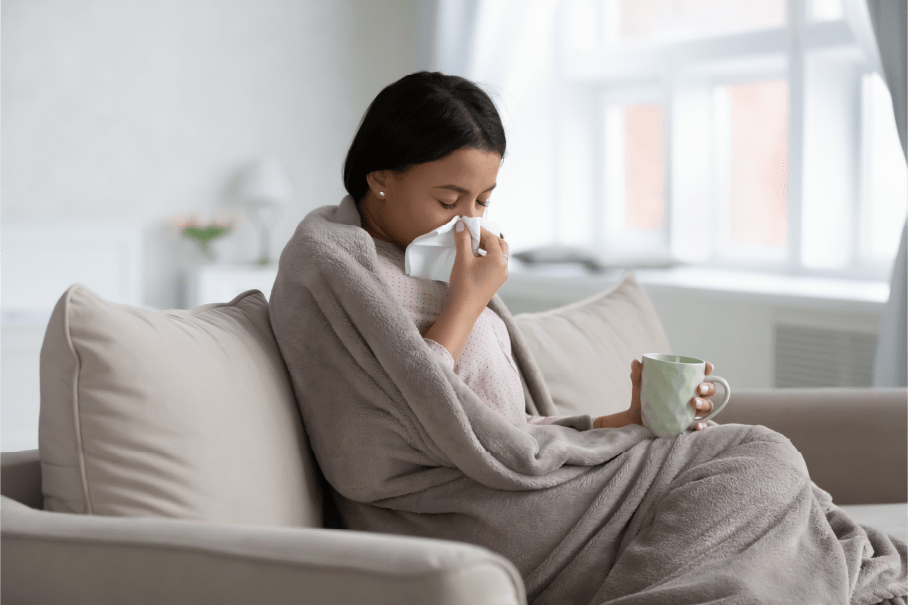Remember when a cold was just a cold? It may feel like a lifetime ago, but there was, in fact, a time when coughing in public didn’t cause alarm, sneezing in a restaurant was common, and pushing through some symptoms to get to work was expected.
While these instances weren’t ideal, they certainly didn’t present the same worries they do now, two years into the COVID-19 pandemic.
And, more recently, with the onset of the Omicron variant, every little symptom elicits some concerning questions: Have I been exposed? Could I be positive? How bad will my symptoms be?
That concern isn’t unwarranted, either, with U.S. total cases still rising above 78 million. Its incredible spread, plus general everyday risk, has left many of us feeling burnt out, worried, and frustrated. During winter cold and flu season, those feelings about COVID-19 can color our reaction to these more familiar illnesses.
Fortunately, with perspective and the right preventive approach, it’s possible to manage this difficult season with vigilance but also less fear.
First and foremost, we know more now than ever before about the symptoms, risk factors, and how both impact our health. These things weren’t top of mind before the pandemic, and now we’ve learned they are of the utmost importance. And it’s not only that we have the resources to help, but also that we have more awareness and understanding of our bodies—and we’re willing to listen when it’s trying to tell us something.
Second, the majority of people are making a conscious choice every day to stay safe and healthy. That comes in the form of better everyday habits such as social distancing, consistent testing, and daily maintenance. And perhaps more importantly, vaccination rates. Upwards of 64% of the U.S. population has made the choice to get fully vaccinated—an essential preventive step to protecting one’s health and reducing fear against severe illness caused by COVID-19. Plus, there’s a greater understanding that the pandemic is gradually becoming endemic—frustratingly persistent, but manageable as part of daily life. Each day offers a new chance to learn how to safely live with COVID-19 as a secondary character in our lives without it taking center stage in everything we do.
And lastly, if you’re here as an EHE Health member, you’re likely already taking care of yourself in a way that prioritizes prevention instead of treatment. Sure, a healthy diet and regular exercise won’t stop you from getting sick, but both can help boost the production of antibodies, reduce inflammation, and set you up to better fight infections and recover more easily.
So, if and when you do start to feel cold, flu, or COVID-19 symptoms start to creep in, try to leverage the control you have in the situation instead of panicking. After all, adding more stress and anxiety into the mix—regardless of illness—will only cause more harm than good.

